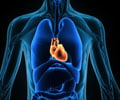Highlights
- Dilated cardiomyopathy (DCM) is a heart disease of unknown etiology, characterized by dilation of the heart chambers and ending in heart failure.
- A genetic cause has been often implicated, but the disease remains poorly understood.
- Mapping the changes in protein signaling pathways that lead to dilated cardiomyopathy has helped researchers identify the molecular pathology involved.
- This knowledge will help in early diagnosis and development of new forms of treatment for the disease.
Led by Professors Andrew Emili and Anthony Gramolini, the team of researchers mapped alterations in protein signaling pathways in heart cells that cause dilated cardiomyopathy (DCM). This has led to a better understanding of the processes causing dilated cardiomyopathy, and heart failure.
Proteins are end products of genes and govern all critical processes in the cell. Various functions of the cell are regulated by complex signaling networks between thousands of different proteins.
The activity of these proteins is regulated by a process termed ‘phosphorylation’, involving the addition of a phosphate group to it. By comparing the patterns of protein phosphorylation in normal and DCM hearts, it is possible to gain insight into the processes involved, and consequently a better understanding of the disease.
"We decided to measure global protein phosphorylation in heart tissue to get a sense for how signaling pathways differ between DCM and normal hearts," said Dr. Uros Kuzmanov, who spearheaded the project as a postdoctoral research fellow in both Emili and Gramolini labs. No similar study has been undertaken on such a large scale earlier.
Details of the Study
To get a better knowledge of how the disease is initiated, the researchers collected heart samples from young adult healthy and diseased mutant mice, at a time when their heart muscles just began to dilate, for a side-by-side comparative study. They then ground the heart tissue to separate out the proteins, which were then fed into a mass spectrometer to be counted.
Future Research Plans
As a next step, the teams plan to carry out a similar study in human tissue. If, as expected, they are able to find similar changes in the same signaling pathways in patients' hearts, then the human map could indeed help scientists in further research focusing on new drug targets or biomarkers for early detection.
"We expect to be able to detect specific changes in signaling pathways in different cardiac patients," said Kuzmanov. "And our approach is not limited to the DCM -- it could be applied to all heart disease."
About Dilated Cardiomyopathy (DCM)
Dilated cardiomyopathy is a disease affecting the heart muscle, of unknown etiology. It begins in the left ventricle, which begins to dilate and thin out. As a result, it is unable to pump blood as efficiently as a normal heart would.
Dilated cardiomyopathy has no cure, but medications to control symptoms of heart failure and prevent complications are administered. Occasionally, a pacemaker may be implanted to control abnormal rhythm (arrhythmia) of the heart.
The knowledge gained by this study, and similar ones may bring us a step closer to targeting drugs or other forms of treatment for dilated cardiomyopathy.
References:
- Dilated Cardiomyopathy (DCM) - (http://www.heart.org/HEARTORG/Conditions/More
/Cardiomyopathy/Dilated-Cardiomyopathy-DCM_UCM_444187_Article.jsp#.V_aQGvl97IU) - Dilated Cardiomyopathy Causes - (http://www.mayoclinic.org/diseases-conditions/dilated-cardiomyopathy/basics/causes/con-20032887)
- About Dilated Cardiomyopathy - (https://www.bhf.org.uk/heart-health/conditions/cardiomyopathy/dilated-cardiomyopathy)
















